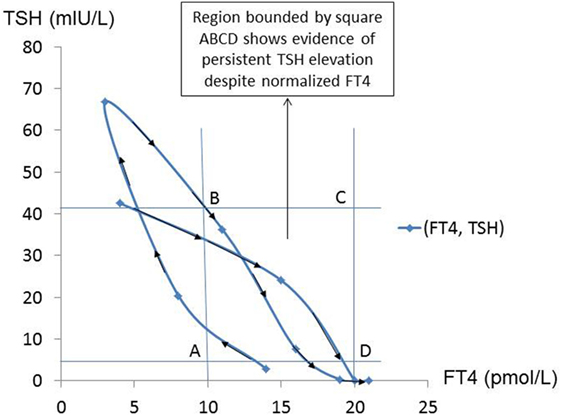They start out saying...
Cat so what is your opinions of this 2020 NIH report?
...
Adult onset male hypogonadism (AOH) is a common clinical condition whose diagnosis and management are controversial, and is often characterized by a low level of SHBG, but our understanding of why testosterone levels are low when SHBG is low is incomplete.
The correlation with low SHBG is potentially explained when they state ...The level of SHBG ... was inversely proportional to BMI...
BMI is correlated with adiposity, which in turn is correlated with aromatase. Higher estradiol lowers the set point of the HPTA, lowering free and total testosterone. This is more prosaic than their speculation that SHBG somehow "regulates testicular negative feedback". While I don't entirely dismiss the latter, I say start with the horses before looking for zebras.
Hopefully they are not also guilty of defining hypogonadism in terms of total testosterone rather than free testosterone. As discussed above, if you have low SHBG then you can have normal free testosterone accompanied by seemingly low levels of total testosterone. Example: A normal healthy young man has SHBG of 30 nMol/L and TT of 500 ng/dL. Vermeulen free T is 11.1 ng/dL. His SHBG drops to 10 nMol/L, which doesn't change free T, but TT drops to 340 ng/dL. Now if he reports TT in isolation he's assumed to be hypogonadal, or close to it.
... the level of SHBG was highly positively correlated ... with the total testosterone level in untreated men presenting for evaluation of AOH, but no relationship was found between the level of SHBG and total testosterone among men who were being treated with a transdermal testosterone preparation.
Untreated men have normal distributions for both free testosterone and SHBG. Total testosterone is a function of these two variables and increases monotonically with free testosterone and with SHBG. Therefore it's only natural for total testosterone to correlate positively with SHBG. Things get more interesting with treated men. It seems likely these men are dosed to achieve normal total testosterone, with little regard for free testosterone. This means that the equation is flipped around, with free testosterone now the dependent variable. If you consider total testosterone as essentially fixed then you're left with comparing this constant to SHBG, which still has a normal distribution. Therefore no correlation is found. I'm a little rusty on random variables, so if there are flaws in this logic then please jump in.

















